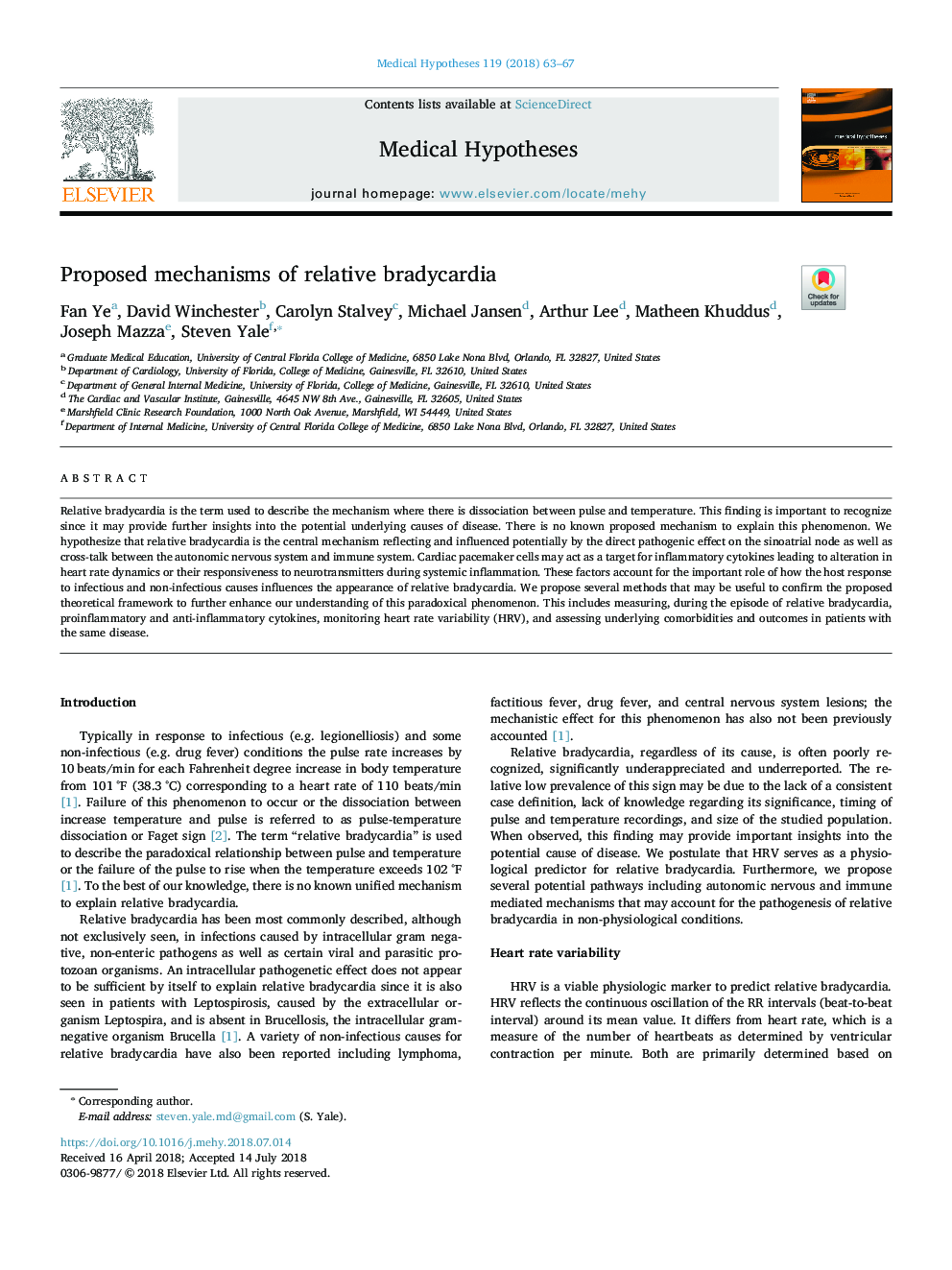| Article ID | Journal | Published Year | Pages | File Type |
|---|---|---|---|---|
| 8515171 | Medical Hypotheses | 2018 | 5 Pages |
Abstract
Relative bradycardia is the term used to describe the mechanism where there is dissociation between pulse and temperature. This finding is important to recognize since it may provide further insights into the potential underlying causes of disease. There is no known proposed mechanism to explain this phenomenon. We hypothesize that relative bradycardia is the central mechanism reflecting and influenced potentially by the direct pathogenic effect on the sinoatrial node as well as cross-talk between the autonomic nervous system and immune system. Cardiac pacemaker cells may act as a target for inflammatory cytokines leading to alteration in heart rate dynamics or their responsiveness to neurotransmitters during systemic inflammation. These factors account for the important role of how the host response to infectious and non-infectious causes influences the appearance of relative bradycardia. We propose several methods that may be useful to confirm the proposed theoretical framework to further enhance our understanding of this paradoxical phenomenon. This includes measuring, during the episode of relative bradycardia, proinflammatory and anti-inflammatory cytokines, monitoring heart rate variability (HRV), and assessing underlying comorbidities and outcomes in patients with the same disease.
Related Topics
Life Sciences
Biochemistry, Genetics and Molecular Biology
Developmental Biology
Authors
Fan Ye, David Winchester, Carolyn Stalvey, Michael Jansen, Arthur Lee, Matheen Khuddus, Joseph Mazza, Steven Yale,
